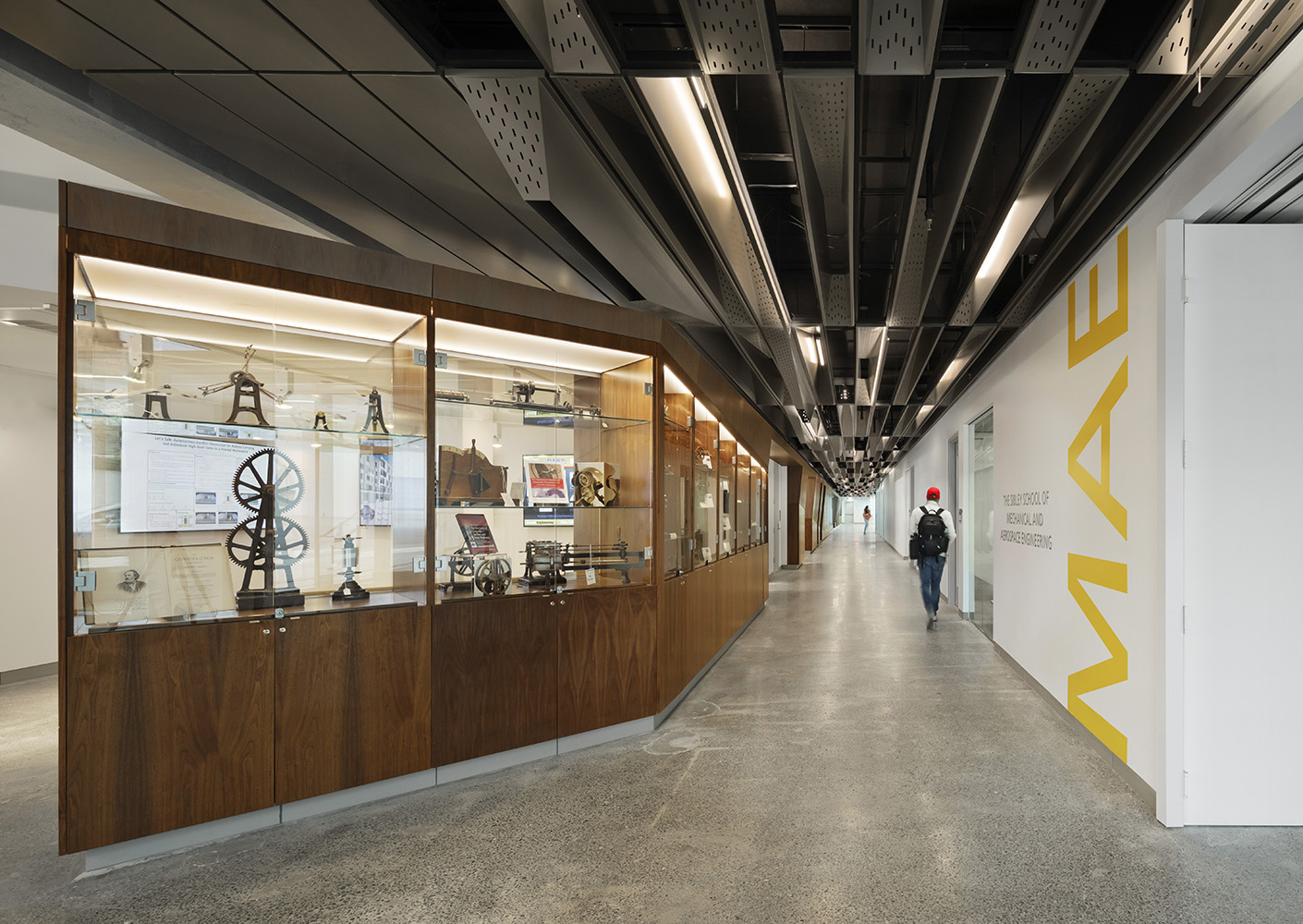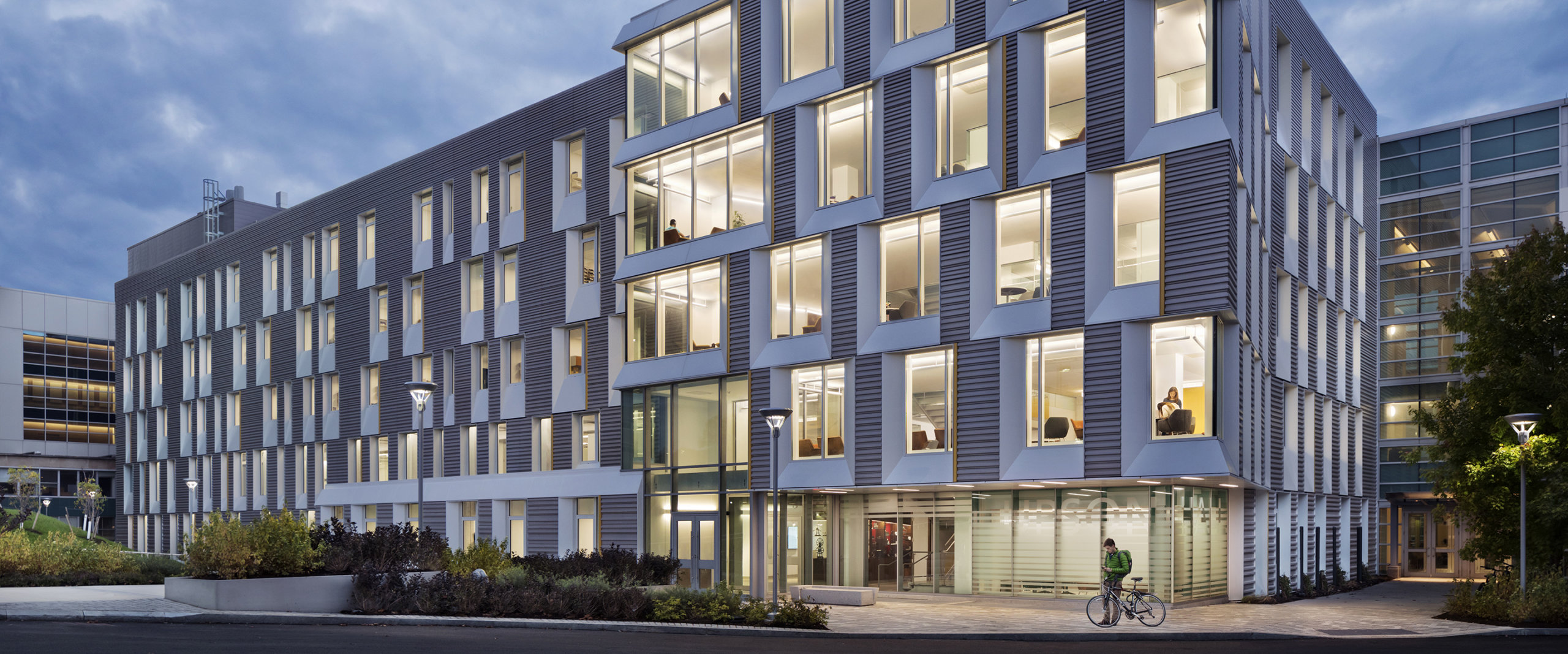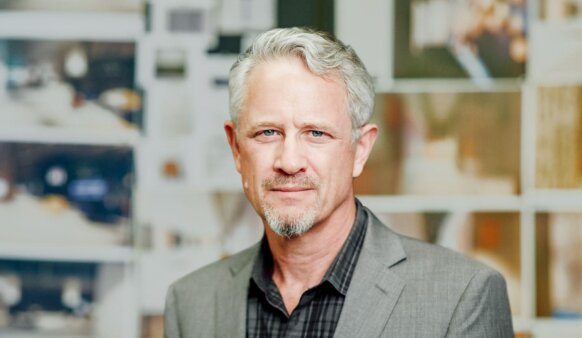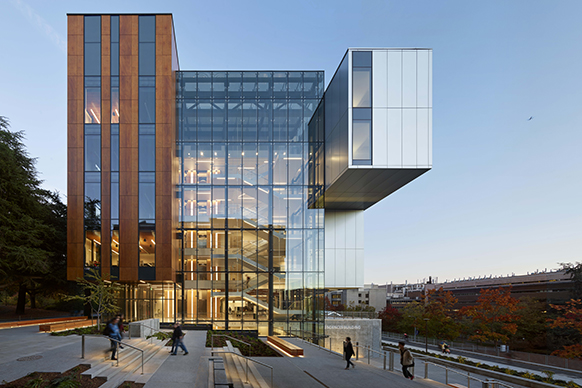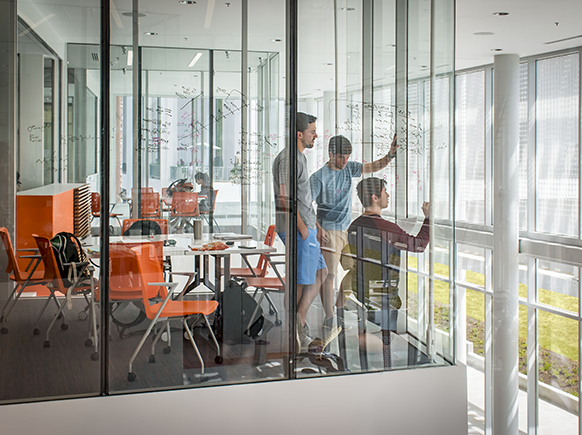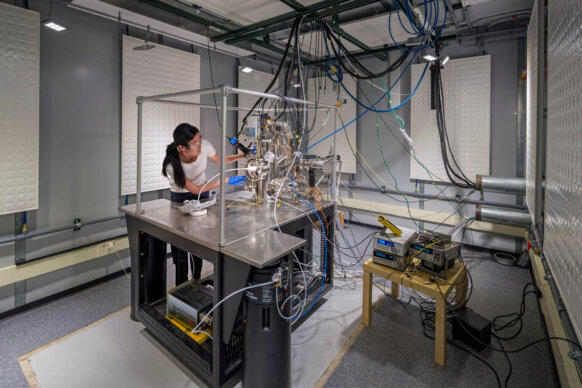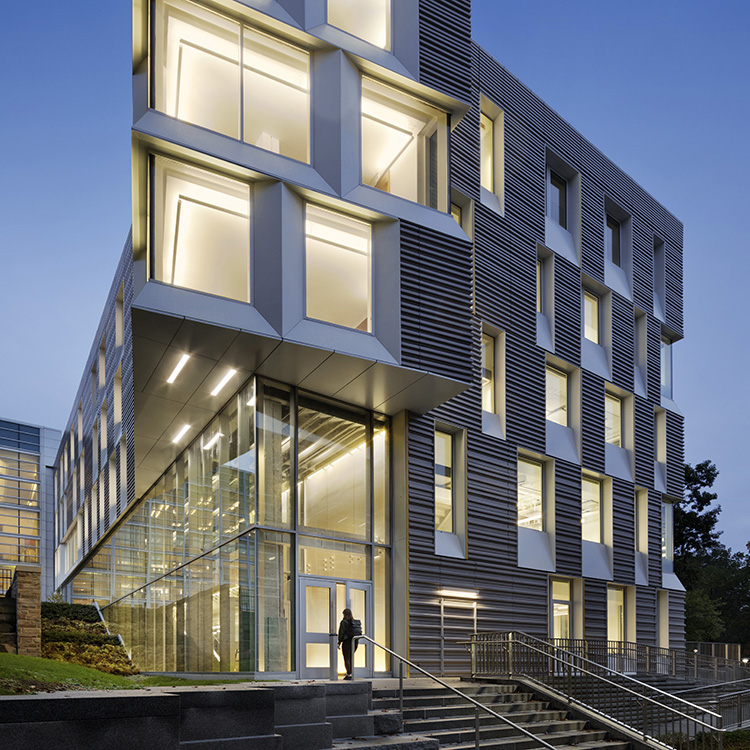
Cornell University Upson Hall
Cornell set an ambitious objective for Upson Hall: “remove the veil from science.”
Not only did the project need to be considered as a single building on campus, it also had to take on the greater responsibility of proposing the future identity for the entire school of engineering.
Our design team created a visually transparent, dynamic, and connected engineering building. Close collaboration with students and administrators showed that future flexibility was a critical requirement. This is addressed with the use of modular planning concepts which allows all spaces to be modified with the evolution of programs and curricula.
Upson Hall sets a new standard for building performance on the Ithaca campus. Our team achieved design excellence and energy efficiency by wrapping the post-WWII building with a performative building envelope and integrating intelligent building systems. Upson Hall operates as a “living sustainability lab” which enables mechanical and aerospace engineering students to work, learn, and study in a high-performance, technologically-advanced facility.
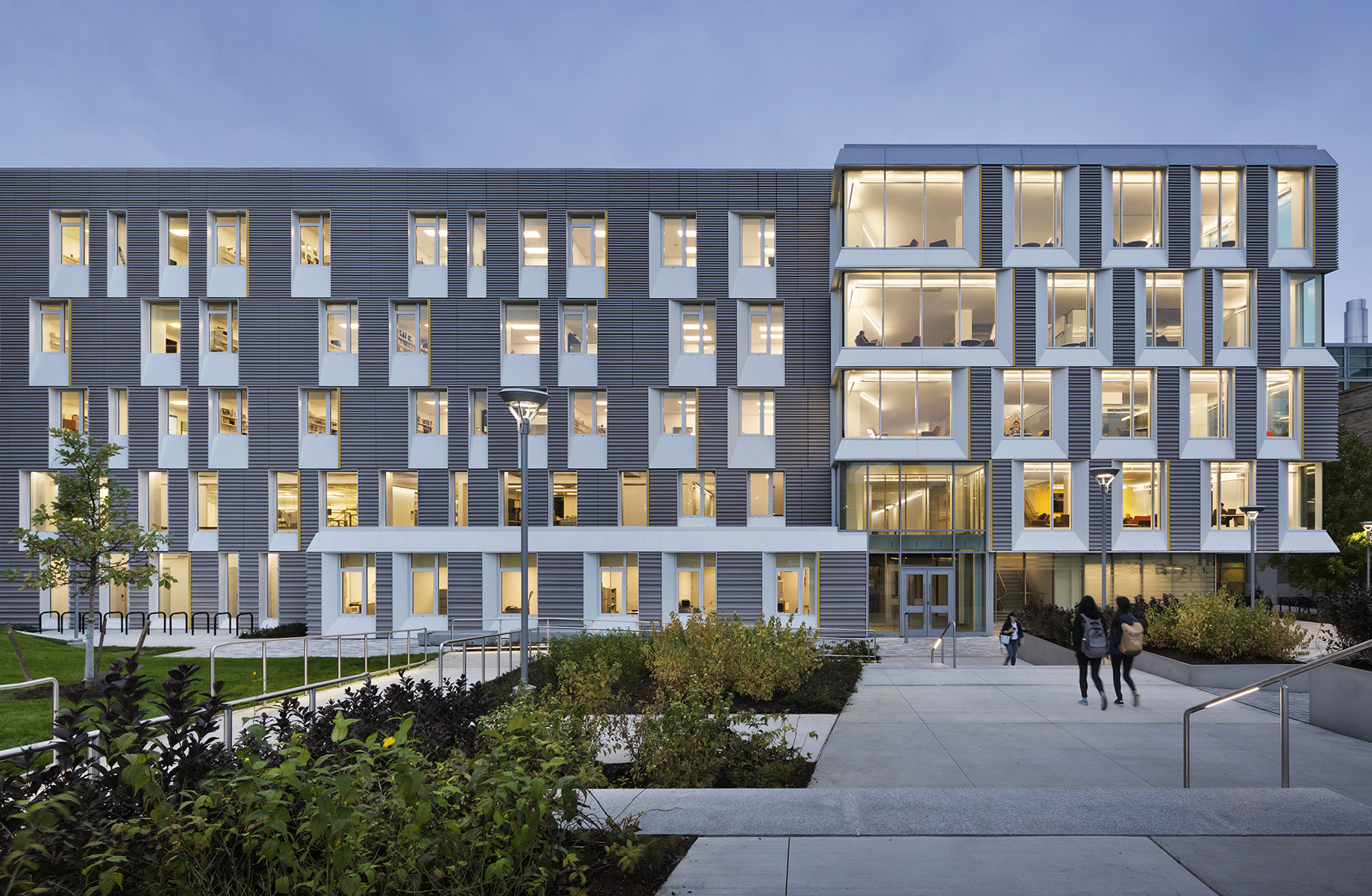
Our design team created a “façade masterplan,” which establishes a new set of parameters for façade renovation and intervention. Our façade masterplan guidelines were implemented on the Upson Hall project, and they set a precedent for future construction projects. We calibrated a climate-specific solution to respond directly to Ithaca’s overcast environment.
Lance R. Collins, Joseph Silbert Dean of Engineering, Cornell University
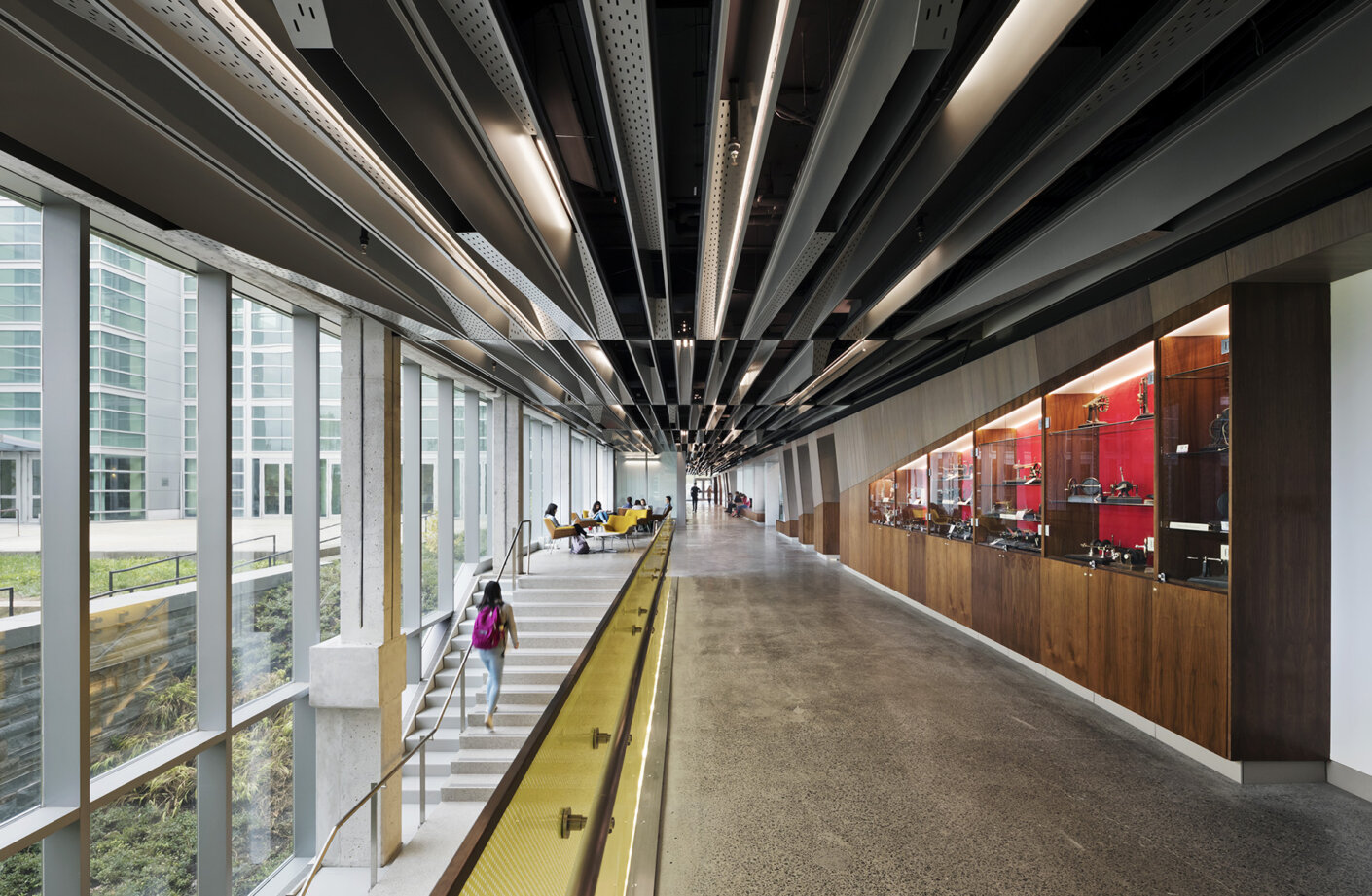
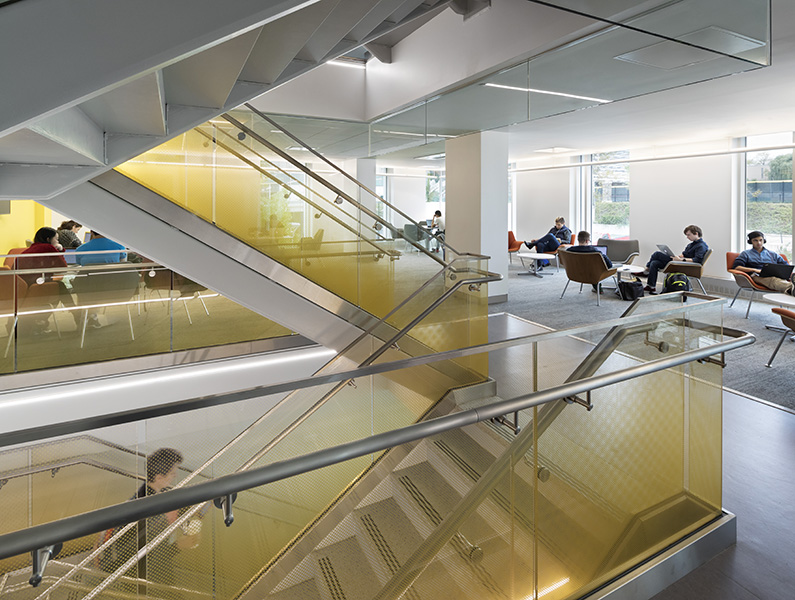
Cornell University has pledged to eliminate or offset net carbon emissions from its campus by 2035. This has made sustainability a major part of every design decision. Upson Hall aggressively drives down energy consumption by using cooling, heating, ventilating and lighting strategies that are specifically matched to Ithaca’s local climate and the users’ occupancy schedules.
Our design team worked with the directors of the school to identify common research interests across faculty members. We mapped existing research relationships across the college, and we identified possibilities for future research collaborations. From this we established research clusters which give research groups a visible presence, regardless of whether they operate within a single department or across multiple disciplines. We used this intelligence to design the entire lower floor of the building with maker labs, where students collaborate on experimental projects as part of their introduction to engineering.
